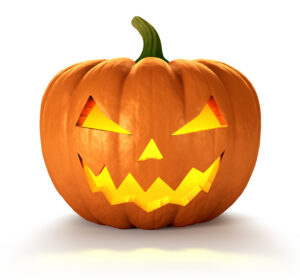October 14, 2019 | Black & Kletz Allergy
Every year, several children are taken to emergency departments on Halloween day for the management of severe allergic reactions. What is meant to be a fun-filled activity can turn out to be a harrowing experience for some families. A few general precautions made by families can prevent most allergic emergencies in children and are as follows:
- Many families understand how to read labels on foods and avoid those that contain ingredients that their children are sensitized to. However, most “fun-sized” candies handed out while trick-or-treating either do not have any labeling at all or they may contain different ingredients than regular sized packages.
- Preventing children with food allergies to trick-or-treat without adult supervision as well as avoiding candies without proper labeling can prevent a life-threatening reaction. It is a good practice for severely allergic individuals to carry epinephrine self-injectable devices (e.g., EpiPen, Auvi-Q, Adrenaclick) while trick or treating.
- Children with food allergies should be taught to politely refuse homemade foods such as cookies and cupcakes that may be unsafe for them.
- Ragweed and mold spores are the most common environmental aeroallergens in the Fall in many geographical areas in late October. In addition, exposure to cats and dogs are not uncommon while trick or treating. Exposure to these allergens may trigger allergic rhinitis (i.e., hay fever) and/or severe respiratory allergic reactions. The use of allergy and/or asthma medications before heading out may be protective. Showering, washing one’s hair, and changing into fresh new clothes after trick or treating will reduce airborne allergen exposure.
- Cold air is a known irritant and prolonged exposure to cold air may aggravate asthma in susceptible children. Frequent indoor breaks and covering the nose and mouth while outdoors can minimize this risk. Children with a history of asthma should also take their rescue inhalers [e.g., albuterol (Proventil, ProAir, Ventolin), levalbuterol (Xopenex)] with them while trick-or-treating.
- Haunted houses with smoke machines may pose a danger to children and adults with severe asthma. Exposure to smoke of any kind can cause an acute asthma exacerbation. Preparation and avoidance are necessary in order to prevent severe asthma attacks.
- Halloween costumes containing strong chemicals may be irritating to children with sensitive skin and as a result a flare-up of their eczema (i.e., atopic dermatitis) may occur. Latex-containing masks as part of the costume may be especially deleterious to children with a history of latex allergy. Children with a sensitivity to metals such as nickel may be exposed to nickel buttons and buckles in costumes which may lead to itching and skin rashes
To help insure that a food allergic child can participate in Halloween and have as much fun as the next child, although nothing is guaranteed, there is a program run by the Food Allergy Research and Education (FARE) organization called the “Teal Pumpkin Project”. This FARE-sponsored international program has been in place since 2014. It began in Tennessee by the mother of a severely food allergic child. The Teal Pumpkin Project’s purpose is to raise awareness of the severity of food allergies and show support to families who have food allergic children. This is done by painting a pumpkin the color teal and then placing it on one’s front porch to signify that “non-food” treats are available at that location on Halloween night. The color teal is used because it represents food allergy awareness. Typically, “non-food” treats may include toys, crayons, stickers, rings, bracelets, necklaces, glow sticks, hair accessories, coins, finger puppets, balls, bookmarks, spider rings, vampire fangs, whistles, etc.
It important to point out that the Teal Pumpkin Project is not exclusionary and it still promotes the option of distributing normal trick-or-treat candy to children without food allergies. It recommends that the “non-food” items be kept in a different bowl than the traditional candy bowl. FARE provides a “Teal Pumpkin Project Participation Map” on its website so that participating houses can be easily assessed by the parents of food allergic children.
Being cognizant of the hidden dangers of trick-or-treating and proactive in preventing allergen exposures can greatly reduce parents’ anxiety as well as help children fully enjoy the Halloween experience. The board certified allergists at Black & Kletz Allergy have had over 5 decades of experience in diagnosing and managing food and environmental allergies, asthma, and eczema in the Washington, DC, Northern Virginia, and Maryland metropolitan area. Both food and environmental allergies can be diagnosed by a thorough history and physical examination along with prick skin testing and/or blood testing. We would be happy to see you in one of our 3 convenient locations with offices in Washington, DC, McLean, VA (Tysons Corner, VA), and Manassas, VA. There is on-site parking at each location and both the Washington, DC and McLean, VA offices are Metro accessible. There is a free shuttle that runs between our McLean, VA office and the Spring Hill metro station on the silver line. To schedule an appointment, please call our office or alternatively, you may click Request an Appointment and we will respond within 24 hours on the next business day. Black & Kletz Allergy is proud to provide quality allergy, asthma, and immunology care in a relaxed compassionate environment.













